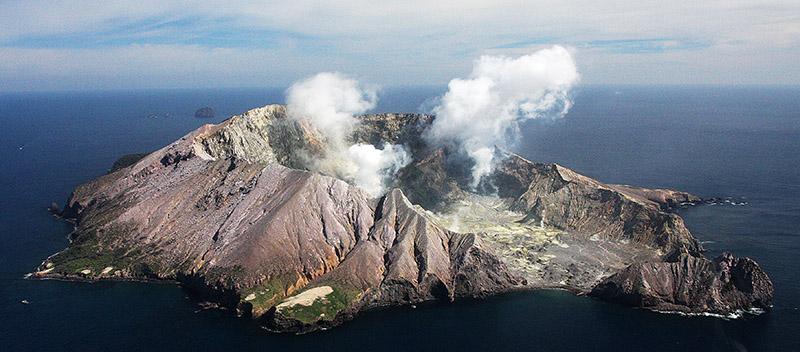Extracting metals from volcanoes
Valuable metals, such as copper, gold, zinc, silver and lithium, could be extracted from the lenses of hot hypersaline liquid trapped in porous rocks below dormant volcanoes.

Scientists believe the lenses, also known as brines, can be extracted to the surface via wells, using the heat of the fluids to generate geothermal power to drive the wellhead operations.
‘The economic bounty of volcanoes remains one of the untapped frontiers in our drive to net-zero,’ says Professor Jon Blundy.
‘Several volcanoes worldwide pump tonnes per day of copper out into the atmosphere in the form of hot gases and aerosols. It is not practical to capture these emissions, but it makes the point that volcanoes, by their very nature, are hot and metal-rich.
‘Almost all non-ferrous metals derive ultimately from volcanic processes. Normally, we have to wait for the products of hydrothermal ore formation to cool and be exhumed to the surface. Brine-mining short circuits this process by tapping into the hot mineralising liquor. This can have huge environmental benefits,’ he explains.
Bundy says that the lenses can be imaged geophysically as electrical conductivity anomalies and have been seen beneath most active or dormant volcanoes.
‘The lenses typically have dimensions to 2-3km radius and 1-2km thickness. The total possible copper endowment of these lenses is over 1.5Mt. It could be quite a bit more depending on the porosity of the rock in which the brine is stored, and [its] temperature. Hotter brines (>450°C) can dissolve more metals.’
The concept came from the scientists’ work on volcanoes and the formation of giant copper deposits. They have used a combination of hydrodynamic simulations to model the formation and evolution of brine lenses, as well as high temperature and pressure experiments to determine the solubility of metals in these brines.
‘We…studied drill core from depths of 1.5-3km at several geothermal or volcano sites to determine the compositions of brines as trapped as tiny 'fluid inclusions' in crystals.’ The researchers are looking into drilling a test bore hole to sample fluids directly.
‘Although this would not be a working mine in the first instance, it would enable us to better constrain the porosity and permeability of the rocks at the reservoir depths, and this ultimately will determine the fluid productivity. It would also enable us to test some different materials and extraction technologies,’ says Bundy.
‘There are several materials challenges. The first is to design coatings for well-bore casings that are corrosion resistant to hot brines. Using titanium casings is prohibitively expensive, so ceramic coatings on steel alloys may be the best approach here.’
He adds, ‘We also need to develop strategies to ensure that the solute load reaches the surface, rather than scaling the well lining up which it travels. This is a common problem in geothermal energy. However, the problematic scales in such situations are, in fact, very high-grade ores.’
So far, the only known case of directly tapping into hot brines was at the Kakkonda geothermal site in Japan in the 1990s, which recovered small volumes of metal-rich brines.
‘However, these very quickly precipitated out their metals due to the pressure and temperature drop during sampling. This is a challenge for 'brine mining' as envisaged, but one that can be addressed,’ asserts Bundy.
The proposed method has yet to be tested, but he says that most of the de-risking research is now complete.







